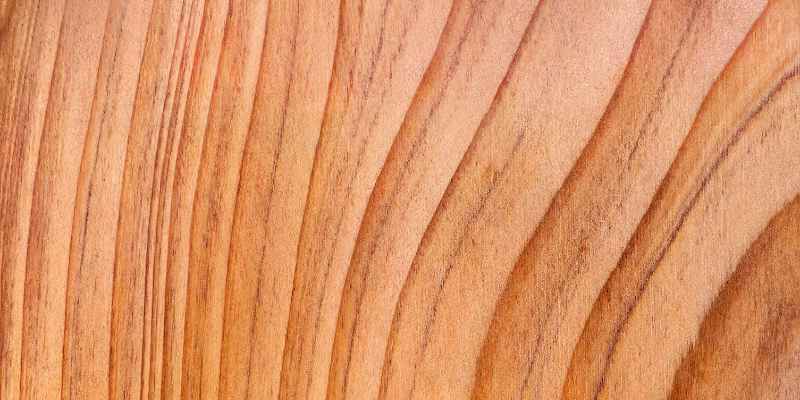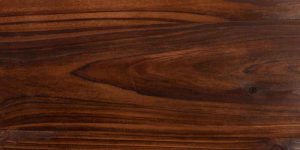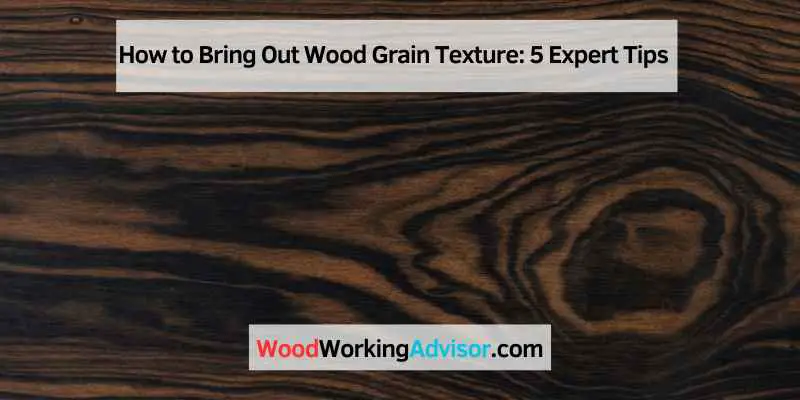To bring out wood grain texture, use a combination of sanding and staining techniques.
Introduction To Wood Grain Enhancement
Wood is a timeless and versatile material that adds warmth and character to any space. One of the unique features of wood is its grain, which refers to the patterns and texture found in the growth rings of the tree. Enhancing the wood grain can bring out its natural beauty and create a stunning visual effect. In this article, we will explore the art of wood grain enhancement and learn how to highlight the intricate patterns that make each piece of wood truly special.
The Beauty Of Wood Texture
Wood texture is a captivating element that sets it apart from other materials. Each type of wood possesses its own distinct grain pattern, ranging from straight and uniform to intricate and wavy. The natural variations in color, tone, and depth within the wood grain create a visual appeal that is both organic and enchanting. By bringing out the wood grain texture, you can showcase the unique personality of the wood and elevate its overall aesthetics.
Importance Of Highlighting Grain
Highlighting the grain of wood serves multiple purposes. Firstly, it adds visual interest and depth to the surface, making the wood more visually appealing. Secondly, emphasizing the grain can help to reveal the natural beauty of the wood, accentuating its unique features and character. Whether you are working with hardwood floors, furniture, or cabinetry, enhancing the wood grain texture can transform ordinary wood into a stunning focal point. Additionally, by bringing out the grain, you can create a more natural and organic look, connecting the piece to its origin in nature.
Choosing The Right Wood Species
When it comes to bringing out the wood grain texture, choosing the right wood species is crucial. Different types of wood have unique characteristics that impact the prominence and appearance of the grain. By selecting the best wood species for your project, you can enhance the natural beauty of the wood grain.
Characteristics Of Different Woods
Wood species vary in their hardness, color, and grain patterns. Some woods have tight and intricate grain patterns, while others feature more pronounced and prominent grains. The natural color of the wood also plays a significant role in showcasing the grain texture. Understanding the characteristics of different woods will help you make an informed decision when selecting the right wood species for your project.
Best Woods For Prominent Grains
For those seeking to emphasize the wood grain texture, certain wood species are particularly well-suited for this purpose. Oak, known for its prominent and pronounced grain patterns, is a popular choice. Similarly, walnut and mahogany are favored for their rich, deep grains that add depth and character to the wood. Maple and cherry also offer distinctive grain patterns that can be enhanced through proper finishing techniques.
Preparation Steps For Unfinished Wood
Preparation is key when it comes to bringing out the beautiful wood grain texture in unfinished wood. Before you can begin the process of enhancing the natural beauty of wood, it’s crucial to properly prepare the surface. This involves sanding techniques to create a smooth canvas and thorough cleaning to ensure the wood is free from any debris or contaminants.
Sanding Techniques
1. Begin with coarse-grit sandpaper to remove any rough spots or imperfections on the surface of the wood.
2. Gradually transition to finer-grit sandpaper to smooth out the wood and prepare it for finishing.
3. Sand in the direction of the wood grain to prevent any visible scratches or marks that could detract from the natural beauty of the wood.
Cleaning The Surface
1. Start by removing all dust and debris from the surface using a tack cloth or a vacuum with a brush attachment.
2. Use a wood cleaner to thoroughly clean the surface, ensuring that it is free from any dirt, grease, or other contaminants that could affect the final finish.
3. Rinse the wood with clean water and allow it to dry completely before proceeding with the finishing process.
Applying Stains And Finishes
Enhance the natural texture of wood grain by applying stains and finishes. Begin by sanding the surface and selecting a suitable product. Then, apply the stain in the direction of the grain and let it dry before adding a clear finish coat to protect the wood.
Selecting Appropriate Stains
Choosing the right stain is crucial to bring out the wood grain texture. There are different types of stains available, such as oil-based, water-based, and gel stains. Oil-based stains penetrate deeply into the wood and enhance the natural texture, while water-based stains are easy to clean up and dry faster. Gel stains, on the other hand, offer a thicker consistency and are ideal for vertical surfaces.
Techniques For Even Application
Once you have selected the appropriate stain, the next step is to apply it evenly. The first thing to keep in mind is to sand the wood surface in the direction of the grain to remove any roughness. Then, use a foam brush or a rag to apply the stain in the direction of the grain. Make sure to cover the entire surface and avoid leaving any puddles or drips. For large surfaces, it is recommended to work in smaller sections to ensure even application.
Finishing Touches
After the stain has dried, it is time to add a protective finish to the wood surface. The most common finishes are polyurethane, lacquer, and shellac. Polyurethane offers a durable and scratch-resistant finish, while lacquer provides a glossy and smooth finish. Shellac, on the other hand, offers a natural and warm finish.
In conclusion, applying stains and finishes is a crucial step in bringing out the wood grain texture. By selecting the appropriate stain, using the right techniques for even application, and adding a protective finish, you can achieve a stunning and long-lasting result.
Using Grain Enhancers

When it comes to enhancing wood grain texture, using grain enhancers is a popular method to bring out the natural beauty of the wood. By applying these enhancers, you can emphasize the unique patterns and characteristics of the wood grain, creating a stunning visual effect.
Types Of Grain Enhancers
- Oil-based enhancers
- Water-based enhancers
- Gel enhancers
Application Tips For Maximum Effect
- Clean the surface before applying enhancer
- Apply in the direction of the wood grain
- Use a brush or cloth for even application
- Allow sufficient drying time between coats
- Finish with a protective topcoat for longevity
The Role Of Sanding In Grain Highlighting
Enhancing wood grain texture involves using sanding techniques to bring out the natural beauty of the wood. By carefully sanding the surface, the wood grain is highlighted, creating a visually appealing finish that adds depth and character to the wood.
This process helps to showcase the unique patterns and textures of different wood types, resulting in a stunning visual effect.
Sanding is a crucial step in bringing out the wood grain texture of any wooden surface. Sanding helps to smoothen out the surface and remove any rough patches, allowing the grain to stand out. When it comes to highlighting the wood grain, sanding plays a vital role in achieving the desired results.
Sanding Between Coats
Sanding between coats is a crucial step in bringing out the wood grain texture. It helps to remove any rough patches and smoothen out the surface, allowing the grain to stand out. Sanding between coats also helps the subsequent coats of finish to adhere better to the surface, resulting in a more even finish. When sanding between coats, it is important to use a fine-grit sandpaper to avoid removing too much of the previous coat.
Choosing The Right Grit
Choosing the right grit of sandpaper is essential in bringing out the wood grain texture. The grit of the sandpaper determines how much material is removed from the surface and how smooth the surface becomes. For highlighting the wood grain, it is best to start with a coarse-grit sandpaper and gradually move to a finer-grit sandpaper. A coarse-grit sandpaper helps to remove any rough patches, while a finer-grit sandpaper helps to smoothen out the surface and bring out the grain.
In conclusion, sanding plays a crucial role in bringing out the wood grain texture. Sanding between coats and choosing the right grit of sandpaper are essential steps in achieving the desired results. By following these steps, you can bring out the natural beauty of wood and create a stunning finish that will last for years to come.
Creative Techniques For Accentuating Grain
Enhancing the wood grain texture can add depth and character to your woodworking projects. By utilizing creative techniques, you can bring out the natural beauty of the wood. Two effective methods for accentuating grain are wire brushing and wet sanding. Let’s explore these techniques in detail:
Wire Brushing Method
- Wire brushing involves using a wire brush to remove soft wood fibers.
- Gently brush the wood along the grain to expose the harder grains.
- Creates a textured surface that accentuates the natural grain patterns.
Wet Sanding For Depth
- Wet sanding involves sanding the wood with water to raise the grain.
- Smoothens the surface while enhancing the depth of the grain.
- Reveals the intricate patterns hidden within the wood.
Protecting The Wood Grain Texture
To maintain the beauty of wood grain texture, it is crucial to properly protect it. This involves using the right sealants and following maintenance tips to ensure longevity.
Sealants For Longevity
Choose quality sealants to protect the wood grain from moisture and damage.
Maintenance Tips
- Regularly clean the wood with a mild soap and water solution.
- Avoid harsh chemicals that can strip the wood of its protective sealant.
- Apply a fresh coat of sealant every few years to maintain protection.
- Keep wood furniture away from direct sunlight to prevent fading.
- Use coasters and placemats to prevent water rings and scratches.
Common Mistakes To Avoid
If you want to achieve a beautiful wood grain texture, you need to be aware of the common mistakes to avoid. Here are the top three mistakes that you should steer clear of:
Over-sanding Issues
Over-sanding can be a big problem when it comes to bringing out the wood grain texture. Sanding too much or too aggressively can damage the wood and even out the grain, making it difficult to see the natural patterns. To avoid over-sanding, start with a low-grit sandpaper and work your way up gradually. Also, be sure to sand with the grain of the wood, not against it.
Choosing The Wrong Finish
The finish you choose for your wood can make or break the appearance of the grain. Some finishes, like paint or heavy stains, can cover up the wood grain completely. Others, like oil-based finishes, can bring out the natural patterns and colors of the wood. Make sure to choose a finish that complements the wood grain and enhances its beauty.
Applying Uneven Stain Or Finish
Another mistake to avoid is applying an uneven stain or finish. This can happen when you don’t apply enough of the product or when you apply too much in certain areas. To prevent this, always follow the manufacturer’s instructions and apply the stain or finish evenly. Use a brush or cloth to distribute the product evenly and wipe away any excess.
By avoiding these common mistakes, you can bring out the natural beauty of the wood grain and create a stunning finish that will last for years to come.
Final Thoughts On Wood Grain Texturing
Enhance the wood grain texture by using a wood stain or dye to bring out the natural patterns. Experiment with different application techniques and sanding methods to achieve the desired effect. Consider using a wood conditioner before staining to ensure an even and smooth finish.
Summary Of Techniques
Enhance wood grain texture with staining, sanding, and grain filler.
Inspiration For Future Projects
Experiment with different wood types and techniques for unique textures.

Frequently Asked Questions
How Can I Bring Out Wood Grain Texture?
To bring out wood grain texture, start by sanding the wood in the direction of the grain. Apply a wood conditioner to prevent blotchiness and then use a wood stain to enhance the grain. Finish with a clear coat to protect and highlight the texture.
What Tools Are Needed To Bring Out Wood Grain Texture?
You will need sandpaper, a wood conditioner, wood stain, a paintbrush or cloth, and a clear coat. The sandpaper will help smooth the wood, the conditioner will prepare it for staining, and the clear coat will protect the finished texture.
Can Any Type Of Wood Be Used To Bring Out The Grain?
Yes, different types of wood can be used to bring out the grain texture. However, some woods, such as oak and mahogany, have more pronounced grain patterns, which can result in a more dramatic effect when bringing out the wood grain texture.
Is It Necessary To Apply A Clear Coat After Enhancing The Wood Grain?
Applying a clear coat after enhancing the wood grain is essential to protect the texture and preserve the finish. It also adds a professional touch to the project, ensuring the wood grain remains highlighted and the surface is durable over time.
Conclusion
Incorporating wood grain texture into your projects can add depth and character. By following these techniques, you can highlight the natural beauty of wood. Experiment with different methods to enhance the texture and create stunning visual effects. Let your creativity shine through in every woodworking endeavor.


